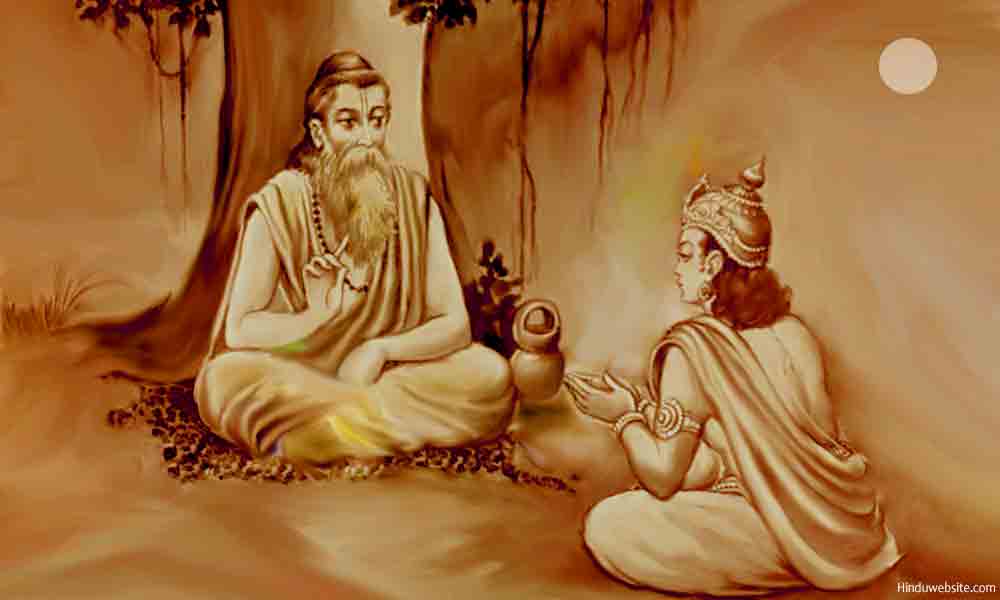
Ashtavakra Samhita, Chapter 1, Verse 20

Contents
Index, Verse 1, Verse 2, Verse 3, Verse 4, Verse 5, Verse 6, Verse 7, Verse 8, Verse 9, Verse 10, Verse 11, Verse 12, Verse 13, Verse 14, Verse 15, Verse 16, Verse 17, Verse 18, Verse 19, Verse 20
Verse 20
ekam sarvagatham vyoma bahiranthar
yathaa ghate
nithyam nirantharam brahma sarvabhuuthagane thathaa
Translation
Just as the space inside and outside a jar is the same everywhere so does the eternal, continuous Brahman exist in all beings
Meaning
The one and only supreme reality
The same ideas presented in the previous verse is represented here with another analogy. The Self in you and the Self in another person are not different. There is no difference, separation or duality between them. It is the same Self that appears in all like the image in a mirror or the space inside a jar. Thus, the whole existence is interconnected. It is one reality, although it appears as many. Each living being appears to be a different entity because of the body and mind. When their formation is completely stopped, the being and its individuality disappear forever and what remains in the end is the Self only, just as the ocean remains when a wave subsides in it.
The Supreme Self is compared in many Upanishads to space, which for all practical purposes is the closest approximation to Brahman in the objective world. Space is subtle, infinite, invisible, uninterrupted, amorphous and universal. Things exist in it, but it does not exist in them. Its presence inside or outside things does not alter it, nor the things it occupies. Like Brahman, space also expands infinitely and acts as the medium of sounds.
In the Vedas, space is called Akasa. It is also the closest approximation to the western notion of ether. We consider it an element. The Vaisheshikas consider space a substance, a view which is now supported by modern science. Buddhists believe the essential nature of space is emptiness, but in Hinduism we believe that it is pure consciousness which is filled with prana, the subtlest form of energy which is responsible for life.
For the school of nondualism, which Ashtavakra upholds in this text, space is the best metaphor to explain the oneness of reality and the illusion of things. Objects may appear in space because of the play of Nature, but when they are withdrawn what is left is but one eternal, indivisible, indistinguishable space.
Niranthara means that which has no antaras, or interruptions, differences, divisions, obstacles, etc. It denotes continuity, constancy, and indivisibility. Vyoma means sky, space, or atmosphere. It is what is filled with the effulgence of the sun. Hence, it is also known as the temple of the Sun.
Suggestions for Further Reading
- Om, Aum, Pranava or Nada in Mantra and Yoga Traditions
- Brahmacharya or Celibacy in Hinduism
- Atheism and Materialism in Ancient India
- Solving the Hindu Caste System
- How To Choose Your Spiritual Guru?
- Creation in Hinduism As a Transformative Evolutionary Process
- Wealth and Duty in Hinduism
- Do You Have Any Plans For Your Rebirth or Reincarnation?
- Understanding Death and Impermanence
- Lessons from the Dance of Kali, the Mother Nature
- Letting your God live in You - The True Essence of the Hindu Way of Life
- prajnanam brahma - Brahman is Intelligence
- Maslow's Hierarchy Of Needs From The Perspective Of Hinduism
- The Definition and Concept of Maya in Hinduism
- The Meaning of Nirvana
- Self-knowledge, Difficulties in Knowing Yourself
- Hinduism - Sex and Gurus
- The Construction of Hinduism
- The Meaning and Significance of Heart in Hinduism
- The Origin and Significance of the Epic Mahabharata
- The True Meaning of Prakriti in Hinduism
- Three Myths about Hinduism
- What is Your Notion of God?
- Why Hinduism is a Preferred Choice for Educated Hindus
- Essays On Dharma
- Esoteric Mystic Hinduism
- Introduction to Hinduism
- Hindu Way of Life
- Essays On Karma
- Hindu Rites and Rituals
- The Origin of The Sanskrit Language
- Symbolism in Hinduism
- Essays on The Upanishads
- Concepts of Hinduism
- Essays on Atman
- Hindu Festivals
- Spiritual Practice
- Right Living
- Yoga of Sorrow
- Happiness
- Mental Health
- Concepts of Buddhism
- General Essays